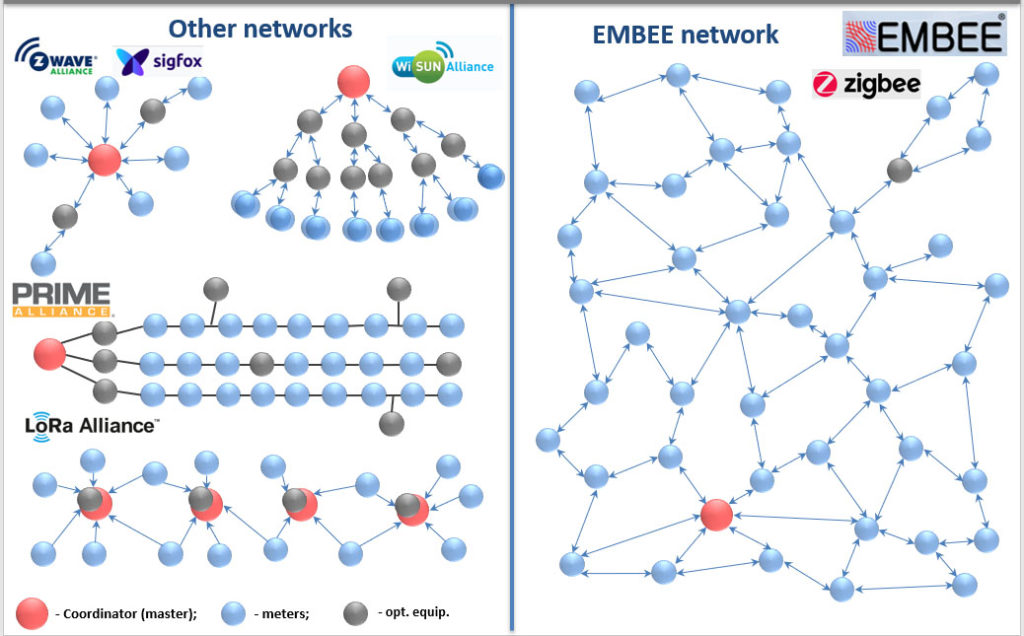
How IoT communication influences CapEx?
As an example, here is a comparison of Smart Street Lightning solutions, which shows how IoT communication affects the price of a lighting point.
 Picture 1
Picture 1
In the picture above, we see two solutions that are implemented on various technologies. Most competitors deploy their solutions at 868 MHz. Embee communication platform operates at 2400 MHz. The complexity of the competitor’s equipment immediately catches your eye. We see a planning system, time monitoring, GPS, three times higher level of consumption and, as a result, the high price of the lighting point in the project.
WHY?
Physics gives a little explanation, see picture 2. If we talk about the RF IoT communications, then most manufacturers choose the parameters like signal propagation, Network topology and coverage, communication performance and data rate.
A business considers technology in terms of development costs and the speed at which a turnkey solution is brought to market. Solutions that are built on the 868, 902, 926 MHz are the most convenient in terms of development costs. This explains the popularity of LoRa, WiSUN, ZWave and other technologies. Many shortcomings (narrow bandwidth, data rate, latency, etc.) of the 868-926MHz technology are overlaped by the complexity of the equipment. We see this in Figure 1. As a result, in the finished solution, it needs to install a lot of additional equipment in order to quickly organize a reliable solution for the customer.
Embee Field Area Network (FAN) uses Ember (Silab) Zigbee stack with up to 200 hops and every minute route change. These two advantages Embee FAN override the lack of weak radio propagation inherent in that range 2,4-2.48 GHz. We debugged addressing probabilistic algorithm, which allowed us to get away from the problem of poor propagation “point-to-point” in Embee mesh network layer.
 Picture 2
Picture 2
As a result, we overlaped the short signal propagation with the help of mathematics and got a FAN mesh radio network that can cover distributed assets at a distance of 20×20 km (Picture 3) without any complicated additional communication equipment. We are implementing an IOT field network cluster with up to 1000-4000 devices per gateway. The wide bandwidth (5MHz) of the IEEE 802.15.4 technology allows us to deploy clusters with such a quantity to one EMBEE/GSM/3G/ETHERNET gateway, and we took advantage of this. This is one cluster for various equipment, electricity meters, sensors, street lamps and other equipment. The wide bandwidth allows to get fast data rate of devices. Some of the Narrow-band IoT technologies with a frequency of 868-926 MHz, with a bandwidth of 0.1-0.2 MHz, cannot read data from big quantity smart meters. (As a rule, this is solved by installing many additional routers and dividing the cluster of one radio network into two levels of data transfer). So, if the client will plan to expand solutions in the future and will adds new types of IoT devices, it needs to foresee.
 Picture 3
Picture 3
Conclusion:
- Big Embee IoT claster without additional communication equipment is low CapEx.
- Simple deployment, simple maintenance.
- Street lighting fixtures hasn’t external antennas. (it is the merit of our firmware, so low cost lighting controller. )
- Large local Embee cluster is the minimum cost for GSM communications. (Low OpEx)

